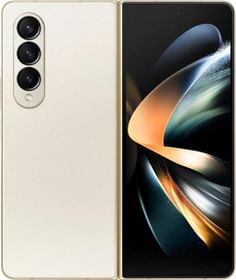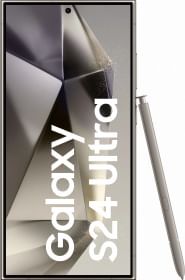Thanks to OnePlus, 90Hz displays became a popular word amongst smartphone enthusiasts since 2019. High refresh rate monitors have been around for ages, but it’s only in the last couple of years that the tech has successfully transitioned to phones. (हिंदी में पढ़िए)
While most of us talk about the screen’s resolution, colors, PPI, and type, we never consider the display refresh rate a priority. Well, that has now changed and high refresh rate screens are now in demand.
Before we list phones with 90Hz or 120Hz refresh rate displays, let’s talk about what’s refresh rate and how much of a practical impact it makes at the user end.
What is Refresh Rate (Hz)? Is it the same as FPS?
The term refresh rate, in layman’s terms, is the count of how many times the screen refreshes its image in one second. It is basically measured in Hz. At present, most smartphone displays have a 60Hz refresh rate, or in other words, even if you are viewing a static image, your display is redrawing the same picture or pushing the same frame 60 times every second.
At times people tend to get confused between higher refresh rates and higher frame rates (Hz vs FPS). FPS is the count of how many frames are being pushed to the display every second. FPS is related to the content you run on the screen, which might be a video or a game.
So, ideally, if your video has been shot and packaged at 90 frames per second (FPS) and your display has a 90Hz refresh rate, your phone will be able to push all frames.
Similarly, you can play games or videos at 90fps on a 90Hz refresh rate panel but not on a display with a lower, say 60Hz, refresh rate.
If you feed 60fps content to a 90Hz screen, the display will either switch to 60Hz or duplicate some frames.
What does a higher refresh rate screen feel like?
The impact is subtle yet noticeable and, we’d say, quite addictive. If you are scrolling in the App drawer, in your browser, settings menu, or in your social media feed, your content will flow up and down smoothly with less friction. Kind of like the difference you’d feel between pushing an ice slab and a wooden slab on a marble floor. Similarly, animations are smoother too.
Higher Refresh Rate displays – Advantages and Disadvantages
Pros
- Noticeably smoother scrolling and animations
- Less eye fatigue
Cons
- Consume more battery
Limitations
Not much content is available to take advantage of 90Hz, so most videos and games push only 60 frames per second. This is also why most high refresh rate phones are programmed to dial down to 60Hz refresh rate when you are watching videos.
ALSO READ: Impact of increase in resolution on battery drain in phones with high-refresh-rate displays
Difference Between Touch Refresh Rate and Display Refresh Rate
Touch Refresh Rate means the speed at which the screen can register your touch and respond by starting to render the next frame in an animation.
If the touch refresh rate and the display refresh rate are both clocked at 60Hz, it means the tracking and refreshing coincide, and the animations are rendered one interval later.
However, say, if the touch refresh rate is 120Hz and the display refresh rate is 60Hz, animations will still be snappier and smoother, and your screen would still appear to be more responsive, but the overall experience won’t match the fluidity of having a 120Hz refresh rate screen.
The iPhone 13 and iPhone 14 series, for instance, have a 120Hz touch refresh rate, and the new iPad Pro has a 120Hz display refresh rate.
Best Phones with higher refresh rates – 120Hz or more
1. Samsung Galaxy Z Fold 4 and Flip 4
The Samsung Galaxy Z Fold 4 sports a 7.6-inch QXGA+ Dynamic AMOLED 2X main display that has a 120Hz refresh rate. It is a dynamic refresh rate that can switch between 1Hz to 120Hz depending on the task you are doing. On folding there is a 6.2-inch HD+ Dynamic AMOLED 2X panel with 120Hz refresh rate. This panel can go as low as 48Hz to save battery.
The foldable is powered by Snapdragon 8+ gen 1 chipset with 12GB RAM and up to 1TB storage. There is a triple camera setup at the back including a 50MP main sensor with OIS, 12MP ultrawide, and a 10MP telephoto lens. The outer front camera is a 10MP sensor while the inner front camera is a 4MP sensor. It is powered by a 4400mAh battery with 25W wired fast charging. The foldable is priced at 1.54,999.
The Samsung Galaxy Z Flip 4 features a 6.7-inch FHD+ Dynamic AMOLED 2X outer screen with a 120Hz adaptive refresh rate. There is a 1.9-inch secondary super AMOLED panel when folded. It is also powered by Snapdragon 8+ Gen 1 chipset with 8GB RAM and up to 512GB storage. The flip phone packs a 3700mAh battery with 25W wired charging. The smartphone is available for Rs. 66,999 via Amazon.
2. Samsung Galaxy S23/S23+ & Galaxy S23 Ultra

Samsung Galaxy S23 Ultra comes with a 6.8-inch QHD+ Edge Dynamic AMOLED 2X Super Smooth display and a 120Hz refresh rate. There is a 240Hz touch sampling rate in game mode. There are 4 camera sensors on the back- 200MP primary, 12MP ultrawide, 10MP telephoto, and 10MP telephoto sensors. The smartphone comes with up to 12 GB RAM and up to 1TB of storage.
Samsung Galaxy S23 has a 6.1-inch FHD+ Dynamic AMOLED 2X display with a 120Hz refresh rate and 240Hz touch sampling rate. It packs a 3900mAh battery with 25W charging and comes with 8GB RAM. There is up to 512GB of onboard storage.
Samsung Galaxy S23+ has a 6.6-inch FHD+ Dynamic AMOLED 2X display with a 120Hz refresh rate. All three smartphones are powered by Snapdragon 8 Gen 2 SoC and run Android 13 out of the box. Galaxy S23 starts at Rs. 79,999 while Galaxy S23+ starts at Rs. 94,999. The Galaxy S23 Ultra starts at Rs. 1,24,999.
3. Asus ROG Phone 7

Asus ROG Phone 7 features a 6.78-inch AMOLED panel with a 165Hz refresh rate and 720Hz touch sampling rate. It is powered by Snapdragon 8 Gen chipset with up to 16GB RAM and up to 512GB storage. The smartphone runs Android 13 OS and packs a 6000mAh battery under the hood with 65W charging. There is a triple camera setup at the back including a 50MP main, 13MP wide angle, and 5MP macro camera. It starts at Rs. 74,999 in India.
4. OnePlus 11

The OnePlus 11 comes with a 6.7-inch Quad HD+ 2.75D curved AMOLED display with a 120Hz refresh rate and Corning Gorilla Glass Victus protection. The smartphone is powered by Snapdragon 8 Gen 2 SoC paired with up to 16GB RAM and up to 256GB storage. There is a 50MP primary camera at the back and under the hood is a 5000mAh battery with 100W fast charging. OnePlus 11 is available at a starting price of Rs. 56,999 via Amazon.
5. Vivo X90 Pro Plus

Vivo X90 Pro is powered by MediaTek Dimensity 9200 chipset paired with 12GB RAM and 256GB storage. It sports a 6.78-inch AMOLED display with a 120Hz refresh rate and HDR10+ technology. The smartphone runs Android 13-based FunTouch OS custom skin out of the box. The triple lens setup at the back includes a 50MP primary, 12MP ultrawide, and a 50MP portrait lens. At the front is a 32MP selfie camera. The device is available for Rs. 84,999.
6. Poco F5
Poco F5 features a large 108p AMOLED display with FHD+ resolution and 120Hz refresh rate. The smartphone is powered by Snapdragon 7+ Gen 2 and packs a 5000mAh battery with 67W fast charging. It comes with a 64MP primary, 8MP ultrawide, and 2MP macro sensors at the back. There is a 16MP camera at the front as well. Poco F5 is available for Rs. 27,999 via Flipkart.
7. OPPO Reno 10 Pro Plus

Oppo Reno 10 Pro+ 5G sports a 6.74-inch FHD+ OLED display with 120Hz refresh rate. Oppo Reno 10 Pro+ 5G is powered by Snapdragon 8+ Gen 1 paired with 12GB RAM and 256GB storage. There is a triple camera setup including a 50MP primary, 64MP telephoto, and an 8MP ultrawide lens. At the front is a 32MP selfie camera and under the hood is a 4700mAh battery. It sports a 6.74-inch FHD+ OLED display and the 5G bands it supports are-1,2,3,5,7,8,12, 20,28,38,40,41,77,78 SA/NSA.
Oppo Reno 10 Pro Plus 5G starts at Rs. 54,999 via Flipkart and is available in glossy purple and silvery grey shades.
8. iQOO 11

iQOO 11 comes with a 6.78-inch AMOLED display that is the first in the segment to use a 2K E6 panel with support for a 144Hz refresh rate. Powering the device is the Qualcomm Snapdragon 8 Gen 2 paired with up to 16GB RAM and 256GB storage. In the camera department, the iqoo 11 features a triple camera setup which includes a 50MP lens, accompanied by a 13MP telephoto lens and an 8MP ultrawide sensor. It houses a 5000mAh battery with 120W fast charging. The iQOO 11 is available at a starting price of Rs. 59,999 via Amazon.
9. Moto Edge 40
Moto Edge 40 ships with a 6.5-inch p-OLED display having 144Hz refresh rate. The 8-bit panel has hdr10+ and DCI-P3 color range support with a 20:9 aspect ratio. It runs Dimensity 8020 chipset with 8GB RAM and 256GB storage and operates on Android 13 out of the box. Motorola has packed a 4400mAh battery with 68W wired and 15W wireless charging. In terms of camera optics, there is a 50MP primary, helped by a 13MP ultrawide camera. It comes in Resada Green, Eclipse Black, and Lunar Blue colors for Rs. 29,999 via Flipkart.
10 OnePlus Nord 3 5G

OnePlus Nord 3 was launched earlier this month and the alert slider is back. The smartphone has a 6.74-inch AMOLED panel with a 120Hz refresh rate and a 93.5% screen-to-body ratio with side bezels measuring 1.46mm. It is powered by a flagship MediaTek Dimensity 9000 chipset with up to 16GB RAM. A 5000mAh battery ensures full-day power and an 80W SuperVOOC charger ensures quick charging speed. It runs OxygenOS 13.1 and has gone on sale from July 15. The OnePlus Nord 3 5G is priced at Rs. 33,999.
Best higher refresh rates display phones in 2023
As of today, 90Hz and 120Hz refresh rate has become a mainstream feature. In fact, there are several mainstream phones that offer displays with a 165Hz refresh rate.




































Good phone